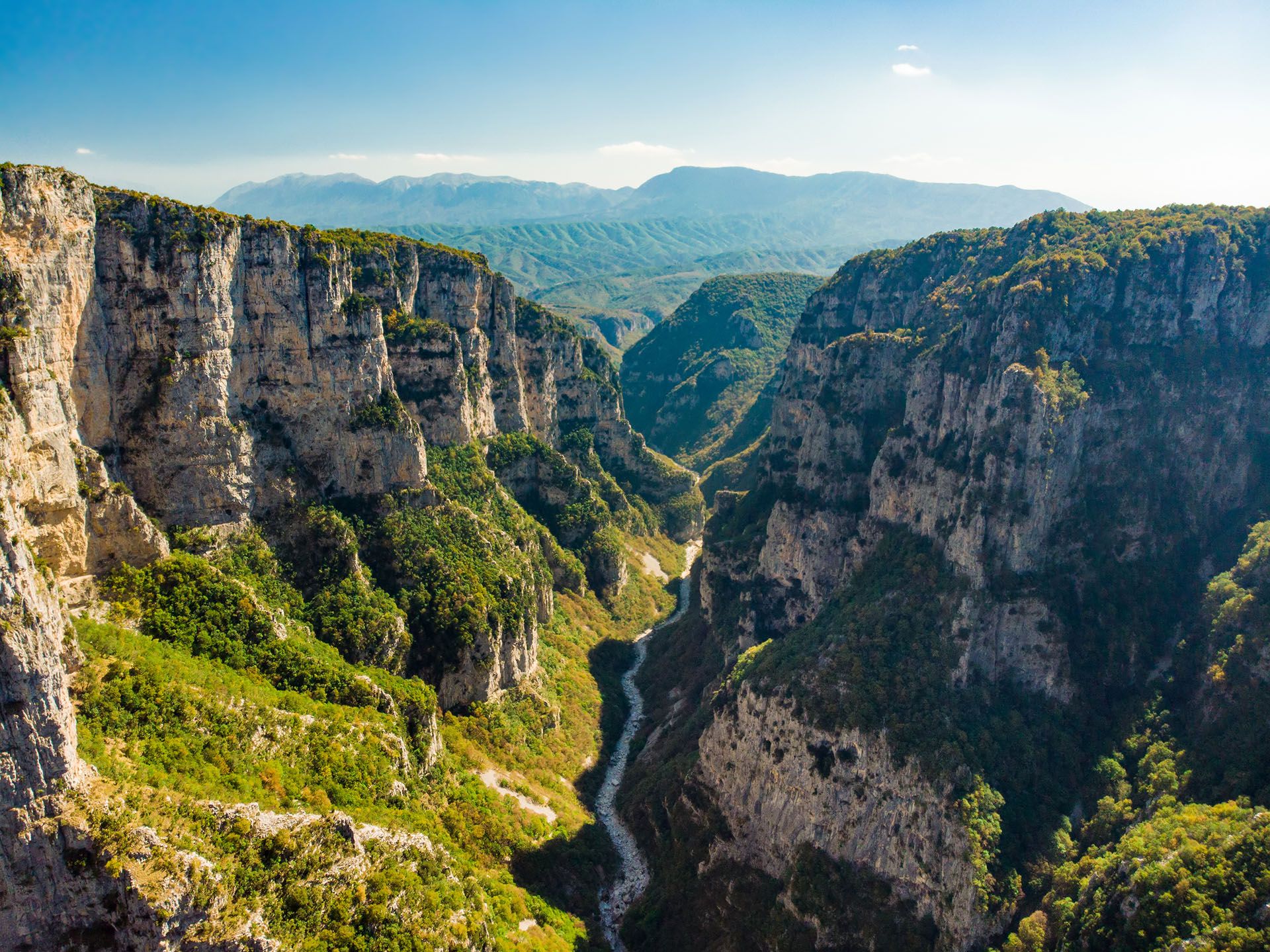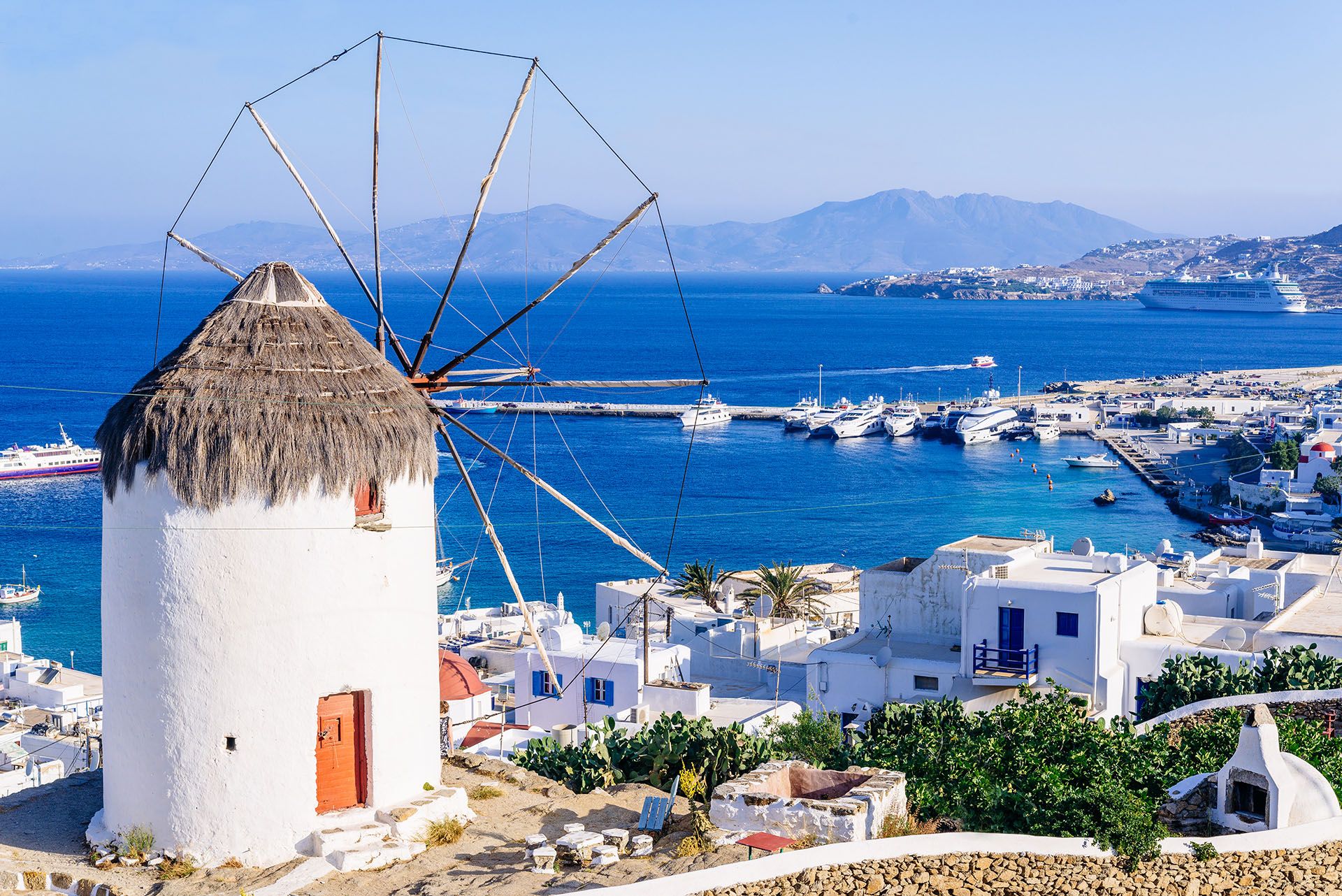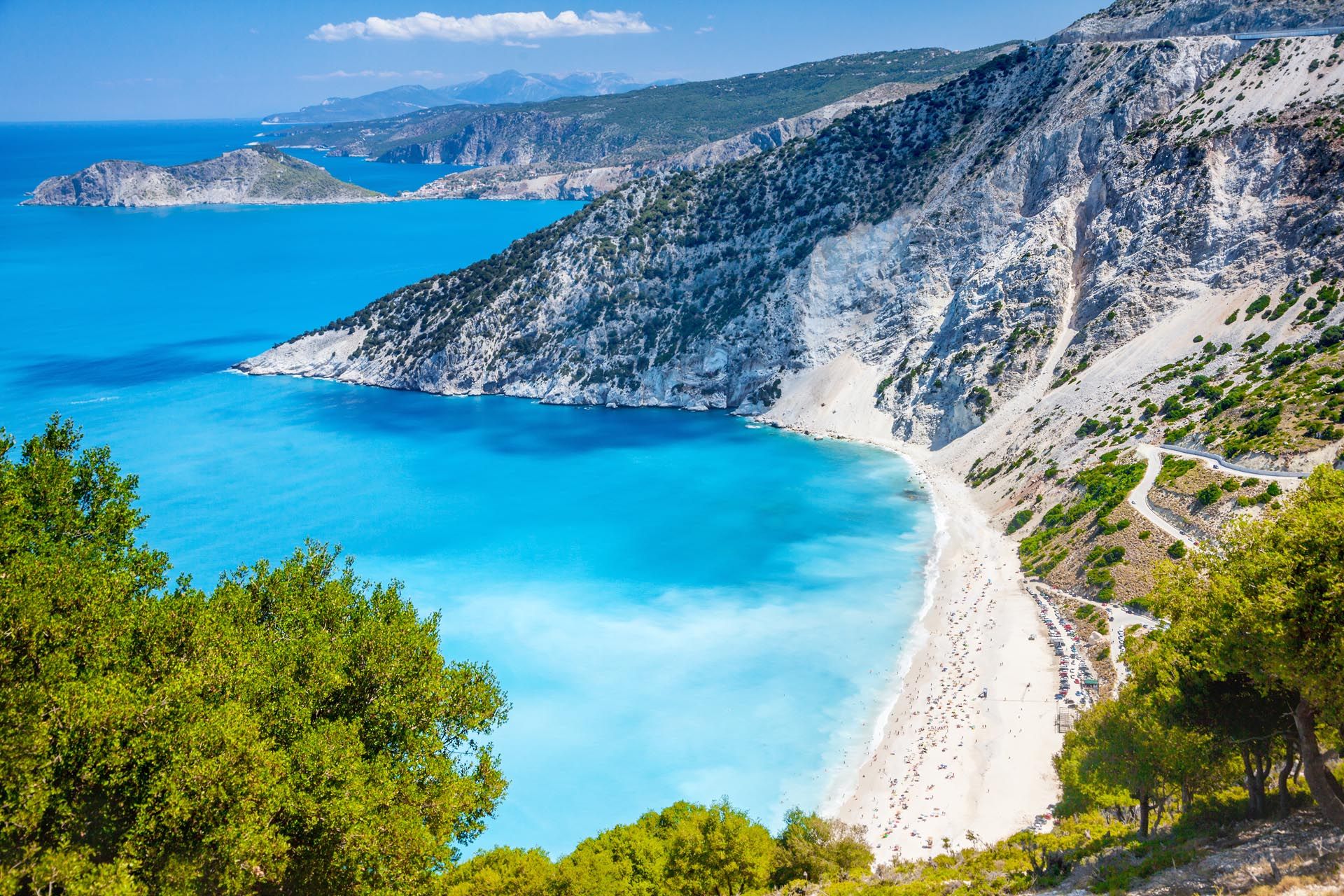Step 7: How to get around Greece
Thanks to its well-developed transportation network, getting around Greece is generally straightforward. Here are some tips for how to navigate the country:
Domestic flights
Domestic flights are the fastest way to travel between major cities, or from Athens to the Greek islands.
Athens International Airport (ATH) is the hub for most domestic flights. Other major airports include Thessaloniki (SKG), Heraklion (HER) on Crete, and Santorini (JTR).
It’s best to book in advance, especially during peak season (June to August).
Ferries
Ferries are the primary mode of transportation between the Greek islands and from the mainland to the islands, and offer a scenic and leisurely way to travel.
Piraeus (Athens) is the largest and busiest port, with connections to most islands. Other key ports include Rafina (near Athens), Thessaloniki, and Heraklion (Crete).
Buses and trains
Buses are the most economical way to travel around the mainland, and between towns and cities on the islands.
While trains are a comfortable way to travel, be aware they have limited coverage compared to buses.
That said, trains are ideal for certain routes, particularly between Athens and northern Greece (e.g. Thessaloniki).
Bikes
Bikes are a great option for getting around some islands and smaller towns.
However, in large busy cities like Athens, the volume of traffic makes navigating by bike pretty challenging.
How to hire a car
Renting a car is ideal if you plan to explore rural areas, drive between cities, or visit remote attractions that aren’t easily accessible by public transport.
To legally drive in Greece, US citizens must have an International Driving Permit (IDP) in addition to their U.S. driver’s license.
You can either rent your car from major international companies like Hertz, Avis, or use a local company.
It’s always best to book in advance — especially in summer — and to opt for a smaller vehicle to make it easier to park and navigate narrow roads.
You drive on the right-hand side of the road, and should be cautious of narrow streets in older towns and villages. You should also be aware of of motorbikes and scooters.
Editor’s tip: read our guide to getting around Greece.


















